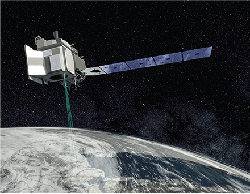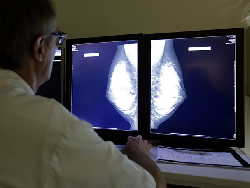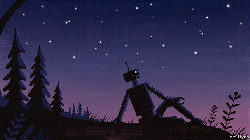September 2018 Ideas and Innovation
Read the articles selected in September 2018
Physicists investigate why matter and antimatter are not mirror images
Source: The Economist, 20 September

It is known that, if matter and antimatter were equal and opposite, the matter of our universe wouldn’t have been formed. Now the CERN is studying if antimatter falls down or up, because, if it falls up, this couldn’t explain the existence of our world, without a difference between the two.
Read more:
Your gut is directly connected to your brain, by a newly discovered neuron circuit
By Emily Underwood
Source: Science, 20 September

A new study reveals that the gut dialogues directly with the brain using not only the hormones slowly released in the bloodstream, but also with immediate electrical signals, transmitted to the vague nervus by the neuronal synapses now discovered in the enteroendocrine cells.
Read more:
Les assistants numériques vont s’immiscer dans nos vies
By Anouch Seydtaghia
Source: Le Temps, 18 September
Virtual assistants articulate the natural rhythm of our days and take our place in the sphere of the closest relations. Through more and more sophisticated interface systems, they know us better than our pockets and are studied to relieve the heaviness of everyday life.
Quelles compétences face aux robots?
By Benoït Georges
Source: Les Echos, 18 September
The 2nd edition of the Future of Jobs Report predicts that by 2025, 75 million jobs will be going lost, compared with the new 58 million that will be created by the digital transformation. The skills that will survive to automation should reflect an abstract, complex and emotional thought.
The dark side of convenience
By William Mansell
Source: Newsweek International, 21 September
Soon the AI will be able to create our replicants to communicate with the world or our loved ones. Beyond the spectral side of this innovation, the risks for the privacy and safety of the consumers and the institutions require targeted measures.
Copyright numérique: stériliser pour mieux tuer
By Éric Guichard Nicolas Schabanel
Source: Libération, 10 September
The European directive on the copyright just approved includes the use of algorithms to automatically detect the violations of the right, inverting the burden of proof and with the risk to hinder, together with the publication of contents, creation, and science.
NASA space laser targets melting poles
By Paul Voosen
Source: Science, 14 September

ICESat-2 is the new NASA satellite dedicated to measuring the height of polar ice in values as small as the diameter of a pencil thanks to its higher resolution and its multiple beams. Combined with the ESA’s radar Cryo-Sat-2, it can read changes also in ice thickness.
Read more:
http://science.sciencemag.org/content/361/6407/1058
Huge genetic-screening effort helps pinpoint roots of breast cancer
By Heidi Ledford
Source: Nature, 12 September

Scientists have analyzed 4000 variants in DNA sequence of BRCA1, the gene associated with the risk of breast or ovarian tumors. The study, carried out in the laboratory using CRISPR-Cas9 gene editing to observe the effects of the variants on the survival of cells, has led researchers to results still open to interpretation.
Read more:
https://www.nature.com/articles/d41586-018-06665-x
Robots et émotions: l’equation impossible?
By Rémi Demichelis
Source: Les Echos, 30 August
The future of the robots is in their interactive capacity. The scientists intend to develop programmes that allow machines to simulate emotions, giving the user the illusion of a sentimental engagement.
A sense of curiosity is helpful for artificial intelligence
Source: The Economist, 30 August

The development of the artificial intelligence exploits a fundamental mechanism of human learning. Through a system based on the “prediction error”, the agent is motivated to search for new data. Educational algorithms interact with the child who learns as a curious agent.
Read more:
Scientists seek a door into dark side of the universe
By Ian Sample
Source: The Guardian, 3 September
At the National Institute for Nuclear Physics in Rome, the Padme machine is ready for the search for the fifth and unknown energy of nature. It’s about the realm of the unknown, the force which can move the particles that constitute dark matter and may not exist at all.
La albomicina, nueva arma contra superbacterias
By Manuel Ansede
Source: El País, 5 September
A team of researchers has synthesized a natural molecule noticed for a long time but not easy to reproduce because of its complexity and big dimensions. The ð-2-albamycin is an important step in the fight against super-bacteria, that only in Europe kill 25.000 people every year.
Info
-
Pubblicato il :
01/10/2018
Modificato il : 04/04/2019
Allegati
- Quelles compétences face aux robots? pdf
- Les assistants numériques vont s’immiscer dans nos vies pdf
- Copyright numérique: stériliser pour mieux tuer pdf
- The dark side of convenience pdf
- La albomicina, nueva arma contra superbacterias pdf
- Scientists seek a door into dark side of the universe pdf
- Robots et émotions: l’equation impossible? pdf

